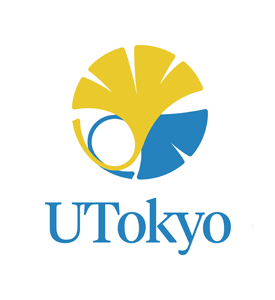The University of Tokyo
Website for International Students

Japan is located in the Circum-Pacific Mobile Belt where seismic and volcanic activities occur constantly. Although the country covers only 0.25% of the land area on the planet, the number of earthquakes and active volcanoes is quite high. In addition, because of geographical, topographical, and meteorological conditions, the country is subject to frequent natural disasters such as typhoons, torrential rains, and heavy snowfalls, as well as earthquakes and tsunami. In order to minimize damages, proper knowledge of disaster management is very important.
Ref. Cabinet Office, Government of Japan "Disaster management in Japan":https://www.bousai.go.jp/1info/pdf/saigaipamphlet_je.pdf
■Earthquake
Earthquake is one of the most frequent natural disasters in Japan. There are about 1,500 earthquakes per year (2-3 per day). Since earthquakes happen with no warning, it is important to be prepared for earthquakes at all times.
UTokyo provides information and updates at these links during times of disaster.
Website https://www.u-tokyo.ac.jp/ja/index.html (Japanese)
Facebook https://www.facebook.com/UTokyo.emerg/ (English/Japanese)
X (Former Twitter) https://x.com/UTokyo_emerg/ (English/Japanese)
Disseminating information for UTokyo during disasters https://www.u-tokyo.ac.jp/en/general/utokyo_emerg.html
[Internal Use Only] The University of Tokyo Disaster Prevention Manual (English/Japanese)
https://univtokyo.sharepoint.com/sites/EHS_portal/SitePages/d/Disaster_Prevention_Manual.aspx
■Heavy Rain, Typhoon
Heavy rain caused by the stationary front at the turn of the season is a common weather system in Japan. Especially from July to October, our country is prone to natural disasters such as heavy rain and strong wind due to the influence of typhoon and front. Other than typhoon, torrential rain or localized heavy rain have become more common recently, and these cause flooding damage to buildings and roads. To protect yourself from these disasters, pay attention to weather updates from Japan Meteorological Agency (JMA) as well as prepare for emergency situations at earlier stage. You can also obtain updated information from NHK world.
・NHK World https://www3.nhk.or.jp/nhkworld/
・JR East Train info (Route search, route map, delay information)
■Weather, Climate & Earthquake Information:
・Typhoon (Tropical Cyclone) information, Warnings/Advisories (Japan Meteorological Agency) https://www.jma.go.jp/en/typh/
・Earthquake Information (Japan Meteorological Agency) https://www.jma.go.jp/en/quake/
・Tsunami Information (Japan Meteorological Agency) https://www.jma.go.jp/en/tsunami/
・Tokyo Fire Department Multilingual Page https://www.tfd.metro.tokyo.lg.jp/eng/index.html
■Multilingual disaster preparedness manuals (Tokyo Metropolitan Government)
"Disaster Readiness Guide" "DISASTER PREPAREDNESS TOKYO"
Japanese, English, Simplified Chinese, Traditional Chinese, Korean
https://www.bousai.metro.tokyo.lg.jp/1028036/1028051/index.html
■Other useful information
・Tokyo Metropolitan Disaster Map https://map.bosai.metro.tokyo.lg.jp/
・Tokyo International Communication Committee https://tabunka.tokyo-tsunagari.or.jp/guide_eng/kinkyu/05.html
・Safety tips for travelers (Japan Tourism Agency) https://www.jnto.go.jp/safety-tips/eng/index.html
・Tokyo Fire Department Multilingual Page https://www.tfd.metro.tokyo.lg.jp/eng/index.html
■Local information:
・Hongo campus area
https://bosai.city.bunkyo.lg.jp/
・Komaba campus area
https://www.city.meguro.tokyo.jp/kurashi/anzen/bosai/map/bousaimap.html
■Kashiwa campus area
・Kashiwa City Disaster and Emergency Information:
https://www.city.kashiwa.lg.jp/anshinanzen/disaster/index.html
・Kashiwa City E-mail Distribution Service: https://www.city.kashiwa.lg.jp/kohokocho/koho/tool/mail/index.html
・Nagareyama City Disaster and Emergency Information:
http://nifa-home.sakura.ne.jp/gaizinmukesiryou/gaizinmukesiryou.html#eigo
・Nagareyama City Official LINE Account:
https://www.city.nagareyama.chiba.jp/eservice/1037131/index.html